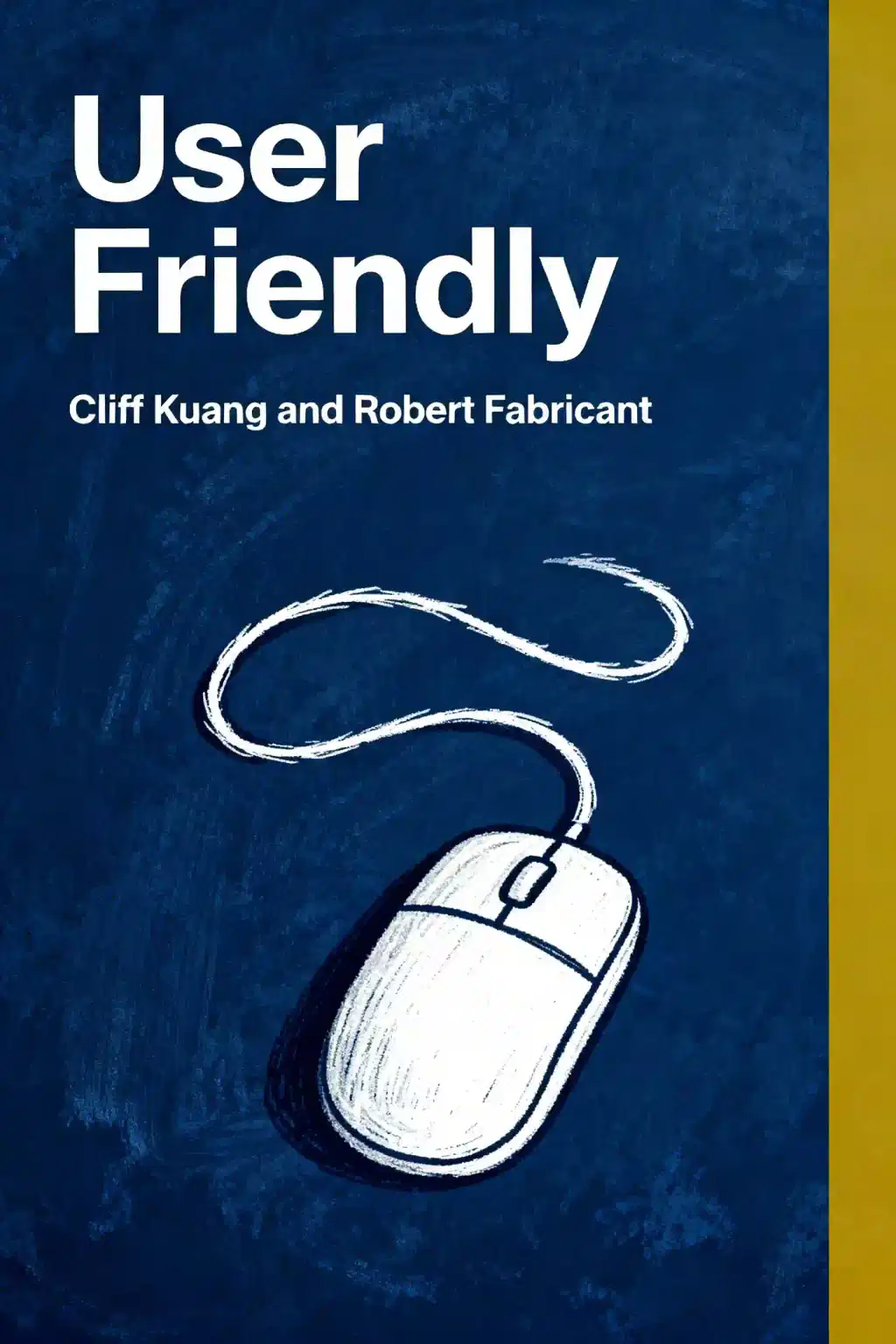What is
User Friendly by Cliff Kuang about?
User Friendly examines how user experience (UX) design principles silently shape modern life, tracing their evolution from early 20th-century innovations to today’s digital age. The book explores paradoxes like technology’s dual role in simplifying tasks while creating new complexities, using historical events like WWII and the Three Mile Island disaster to illustrate design’s societal impact.
Who should read
User Friendly by Cliff Kuang?
This book is essential for UX designers, tech enthusiasts, and anyone curious about how design influences behavior. It’s also valuable for critics of modern technology, offering insights into ethical dilemmas like corporate profit motives versus user well-being.
Is
User Friendly by Cliff Kuang worth reading?
Yes—it combines rigorous research with engaging storytelling, making complex design concepts accessible. The authors avoid technical jargon, using real-world examples like social media’s addictive interfaces and GDPR regulations to highlight design’s role in equity and privacy.
What are the key principles of user-friendly design?
User-friendly products must prioritize user needs (e.g., health equity via telehealth), use intuitive mental models (like desktop “folders”), and mirror human values in interactions. The authors argue design should foster autonomy, not addiction, by reimagining tools like social media.
How does
User Friendly address design ethics?
The book critiques corporate-driven design that prioritizes engagement over well-being, citing examples like manipulative app interfaces. It urges a shift toward ethical frameworks that balance business goals with societal benefits, such as equitable access to technology.
What historical events shaped user experience design?
Key milestones include WWII-era cockpit redesigns to reduce pilot errors, the 1980s Macintosh’s intuitive interface, and the Three Mile Island disaster, which exposed flaws in nuclear plant control systems. These events cemented UX as a critical discipline.
How does
User Friendly explain technology addiction?
Cliff Kuang and Robert Fabricant argue that addictive designs exploit psychological triggers (e.g., infinite scroll), creating dependency. They advocate for “humane” interfaces that respect users’ time and mental health, like tools promoting intentional social media use.
What metaphors does
User Friendly use to explain design?
The authors compare autonomous vehicles to “rolling living rooms” to emphasize user comfort and AI assistants to “digital butlers” that anticipate needs. These metaphors underscore how design shapes human-technology relationships.
How is
User Friendly relevant to current tech trends?
It addresses AI’s ethical challenges, such as bias in algorithms, and GDPR’s impact on data privacy. The book argues future innovation must prioritize transparency, like explainable AI systems that users can audit.
What criticisms does
User Friendly discuss about UX design?
The book acknowledges UX’s role in fostering overconsumption and surveillance capitalism. For example, “dark patterns” in apps manipulate users into sharing data, highlighting the tension between corporate profits and user rights.
How does
User Friendly compare to other design books?
Unlike technical manuals, it weaves historical narratives with critical analysis, similar to The Design of Everyday Things. However, it uniquely focuses on design’s societal consequences, such as its role in democratic access to information.
What lessons from
User Friendly apply to product development?
Designers should prototype with diverse users (e.g., including disability communities) and prioritize long-term user well-being over short-term engagement metrics. The book cites medical device redesigns that improved accessibility for elderly patients.





















